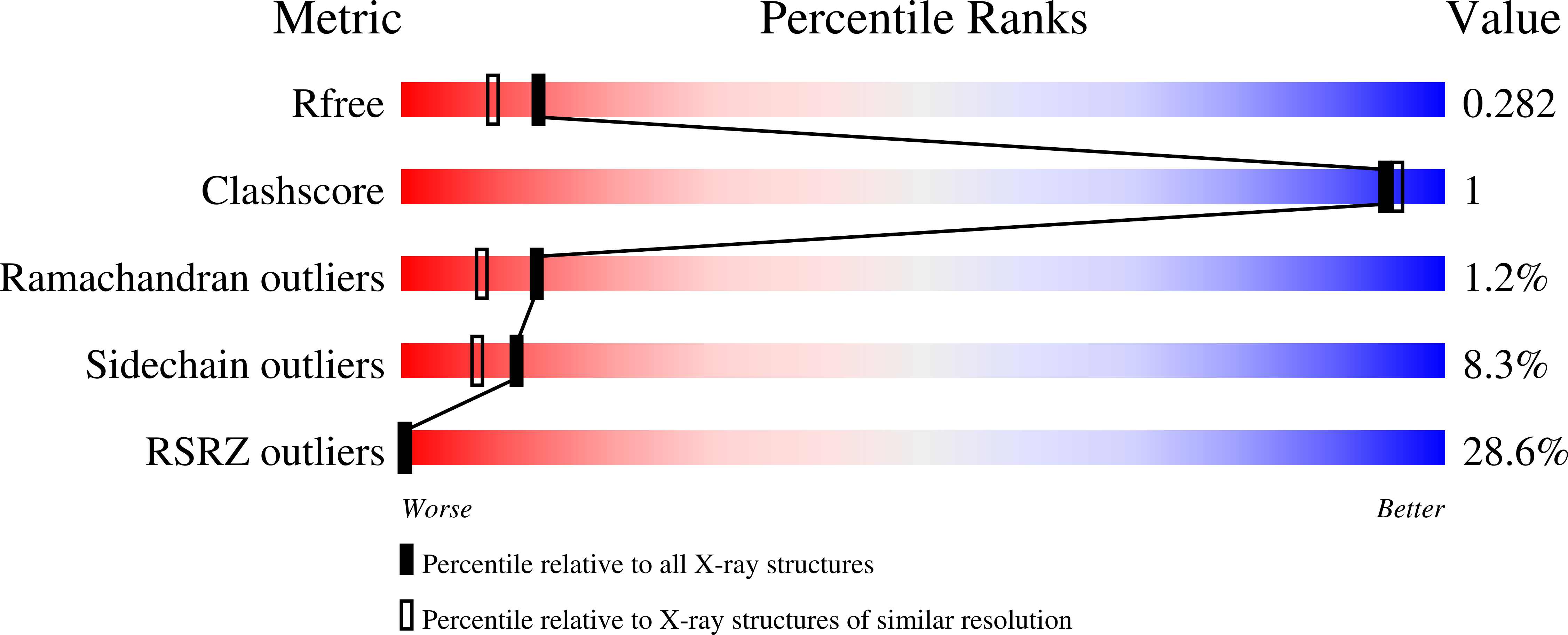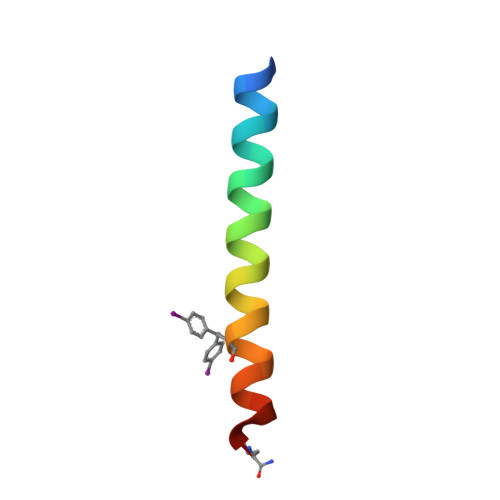X-ray Crystallographic Structure and Solution Behavior of an Antiparallel Coiled-Coil Hexamer Formed by de Novo Peptides.
Spencer, R.K., Hochbaum, A.I.(2016) Biochemistry 55: 3214-3223
- PubMed: 27192036
- DOI: https://doi.org/10.1021/acs.biochem.6b00201
- Primary Citation of Related Structures:
5EOJ, 5EON - PubMed Abstract:
The self-assembly of peptides and proteins into higher-ordered structures is encoded in the amino acid sequence of each peptide or protein. Understanding the relationship among the amino acid sequence, the assembly dynamics, and the structure of well-defined peptide oligomers expands the synthetic toolbox for these structures. Here, we present the X-ray crystallographic structure and solution behavior of de novo peptides that form antiparallel coiled-coil hexamers (ACC-Hex) by an interaction motif neither found in nature nor predicted by existing peptide design software. The 1.70 Å X-ray crystallographic structure of peptide 1a shows six α-helices associating in an antiparallel arrangement around a central axis comprising hydrophobic and aromatic residues. Size-exclusion chromatography studies suggest that peptides 1 form stable oligomers in solution, and circular dichroism experiments show that peptides 1 are stable to relatively high temperatures. Small-angle X-ray scattering studies of the solution behavior of peptide 1a indicate an equilibrium of dimers, hexamers, and larger aggregates in solution. The structures presented here represent a new motif of biomolecular self-assembly not previously observed for de novo peptides and suggest supramolecular design principles for material scaffolds based on coiled-coil motifs containing aromatic residues.
Organizational Affiliation:
Department of Chemistry and Department of Chemical Engineering & Materials Science, University of California, Irvine , Irvine, California 92697-2575, United States.















